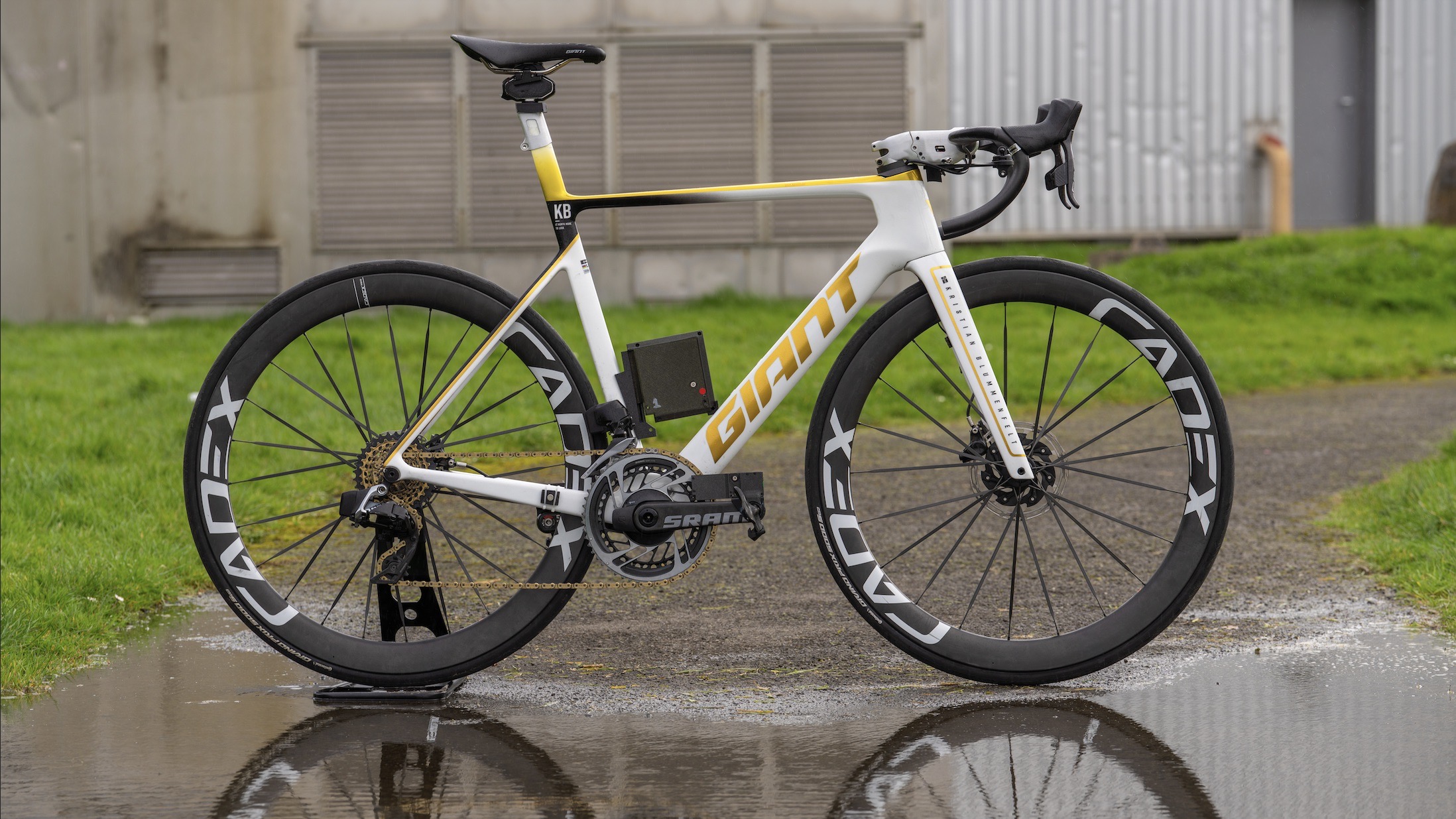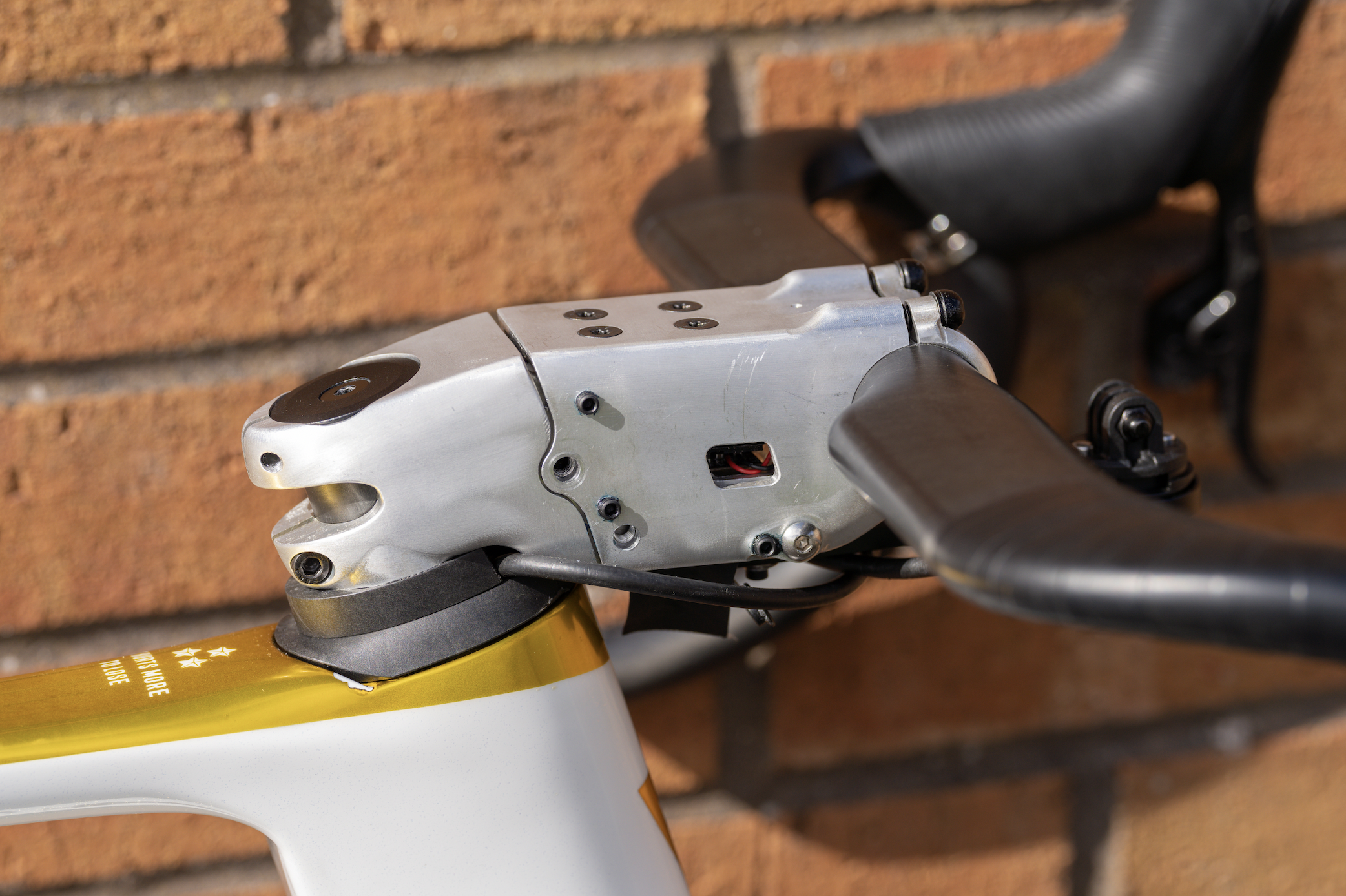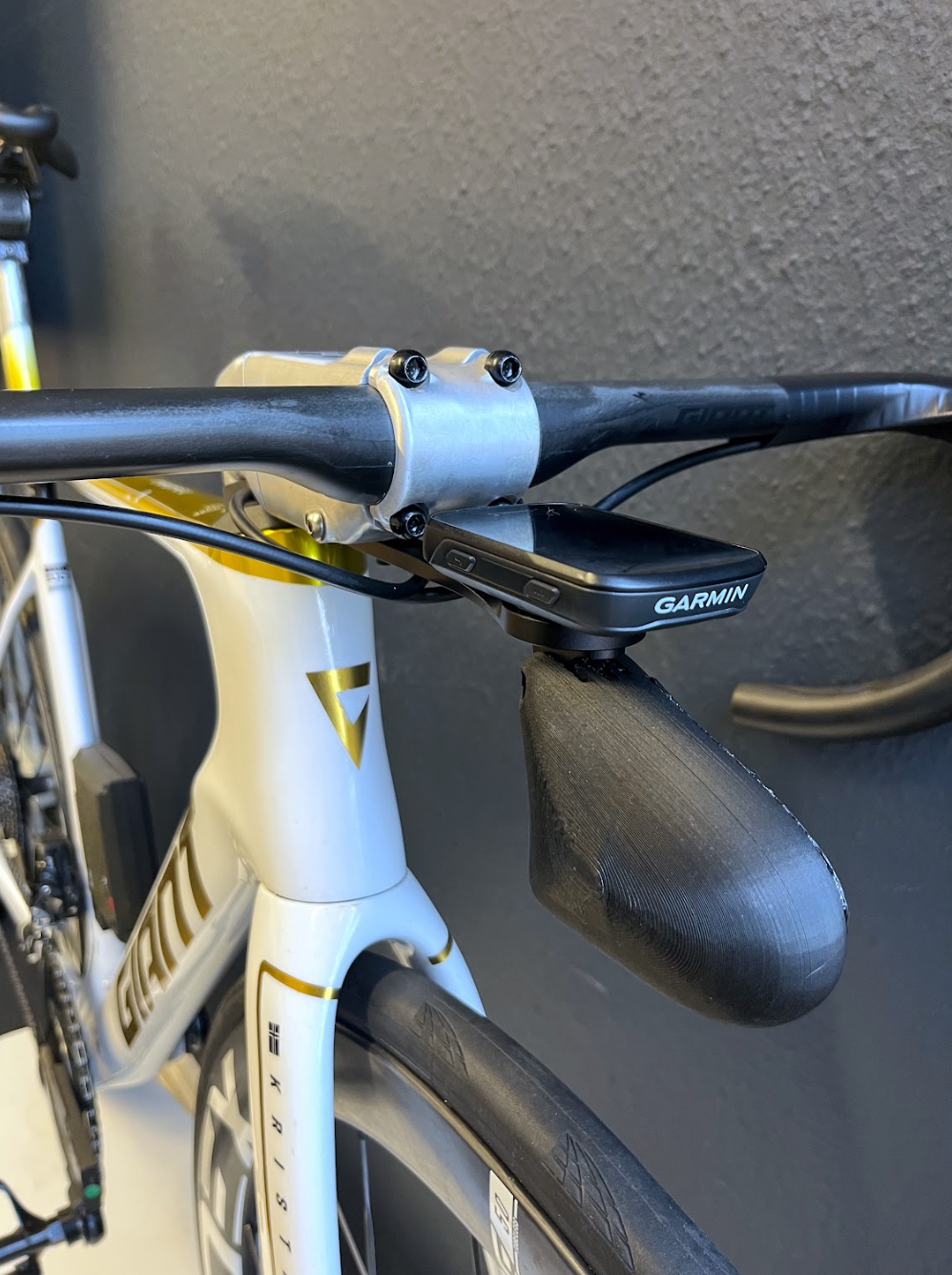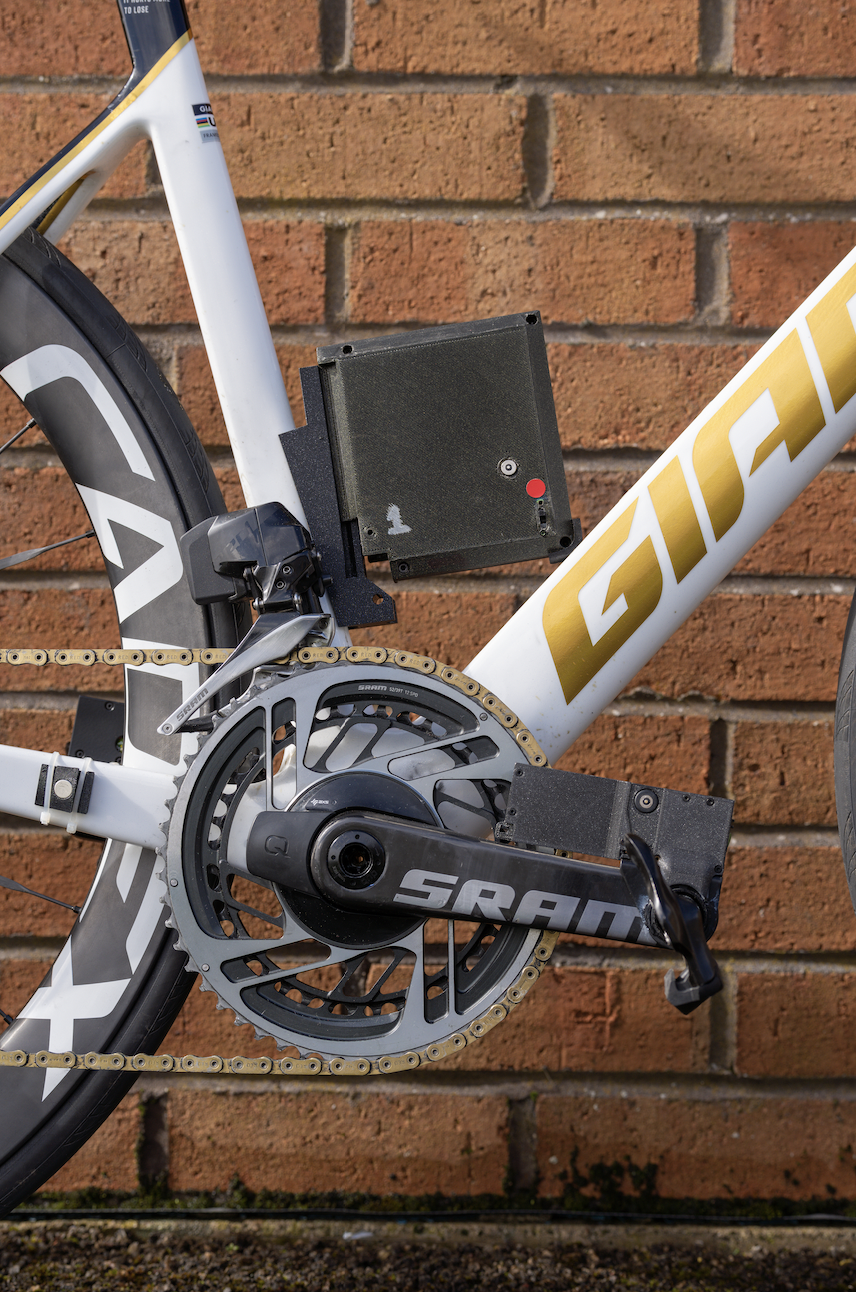Measuring real-time real-world aerodynamic drag for your road bike just got closer
Previously confined to TT/triathlon bikes, the system has now been fitted to a Giant Propel

Body Rocket, a startup responsible for producing drag measurement systems for time trial and triathlon bikes, has released details of a prototype, road bike-compatible system designed to help its sponsored athletes at the Olympic triathlon in Paris.
The sensor array, consisting of force (power), air pressure, wind speed, acceleration, inclination, and weight, has previously been reserved for those bikes designed to race against the clock, or in non-draft events. Even amongst those bikes, the sensors can only be fitted to a handful of models.
Why the switch to road bikes? It appears it was always on the cards for the brand, but it has been working closely with Ironman world champion Kristian Blummenfelt, who has not been focussing on road bike, draft legal triathlons. Now, in the build-up to the Olympics, where he is looking to take the gold medal, it is hoped that the setup fitted to his Giant Propel well in advance will give him a competitive edge, and time to optimise his position and setup.

How does it work?
Aero testing primarily takes place in a wind tunnel. Parameters are tightly controlled, but in general wind tunnel time is a fraction of the time spent training. The Body Rocket system aims to replicate the data produced in wind tunnel testing but in the real world.
To achieve this the road bike has been fitted with a new, updated airspeed sensor which mounts beneath an out-front computer, resembling the nose cone of an aircraft or the bulbous bow of a cargo ship.
Behind this is a custom-made stem, containing all the sensors previously housed in a separate standalone unit that usually resides at the base of TT bar extensions.
At the top of the integrated seat mast is a further sensor, working in tandem with the stem to measure rider weight; as this can fluctuate throughout a race due to hydration levels and sweat it is necessary to measure rather than estimate this it seems.
Get The Leadout Newsletter
The latest race content, interviews, features, reviews and expert buying guides, direct to your inbox!
Finally, a pair of pedal sensors add to the drag equation and all of this feeds back into a bottle cage-mounted relay unit, which in turn transmits the real-time CdA data to a Garmin head unit.
Without going into the full coefficient of drag equation it's hard to fully understand what each sensor does, but according to Body Rocket Founder, Eric DeGolier, "Each sensor measures horizontal and vertical forces, and the saddle and handlebar sensors also measure pitching and rolling moments, allowing the system to not only measure drag forces (the sum of the horizontal forces at each sensor) but also track the rider's position on the bike."
It is unclear at this time how much of an aero penalty these additional sensors add.

How accurate is it?
Realtime measurement of drag is certainly of benefit to professional athletes, though unless it is accurate it may well be of no use. The system, fitted to a BMC time trial bike, was tested alongside a wind tunnel by making identical setup changes.
The brand’s data shows a maximum deviation from the wind tunnel of 2.7% and an average variation of 0.7%. While this was set up on a time trial bike it does indicate that, provided the system is effectively the same, it does offer genuine real-world aero testing opportunities that can rival a wind tunnel.


Will joined the Cyclingnews team as a reviews writer in 2022, having previously written for Cyclist, BikeRadar and Advntr. He’s tried his hand at most cycling disciplines, from the standard mix of road, gravel, and mountain bike, to the more unusual like bike polo and tracklocross. He’s made his own bike frames, covered tech news from the biggest races on the planet, and published countless premium galleries thanks to his excellent photographic eye. Also, given he doesn’t ever ride indoors he’s become a real expert on foul-weather riding gear. His collection of bikes is a real smorgasbord, with everything from vintage-style steel tourers through to superlight flat bar hill climb machines.